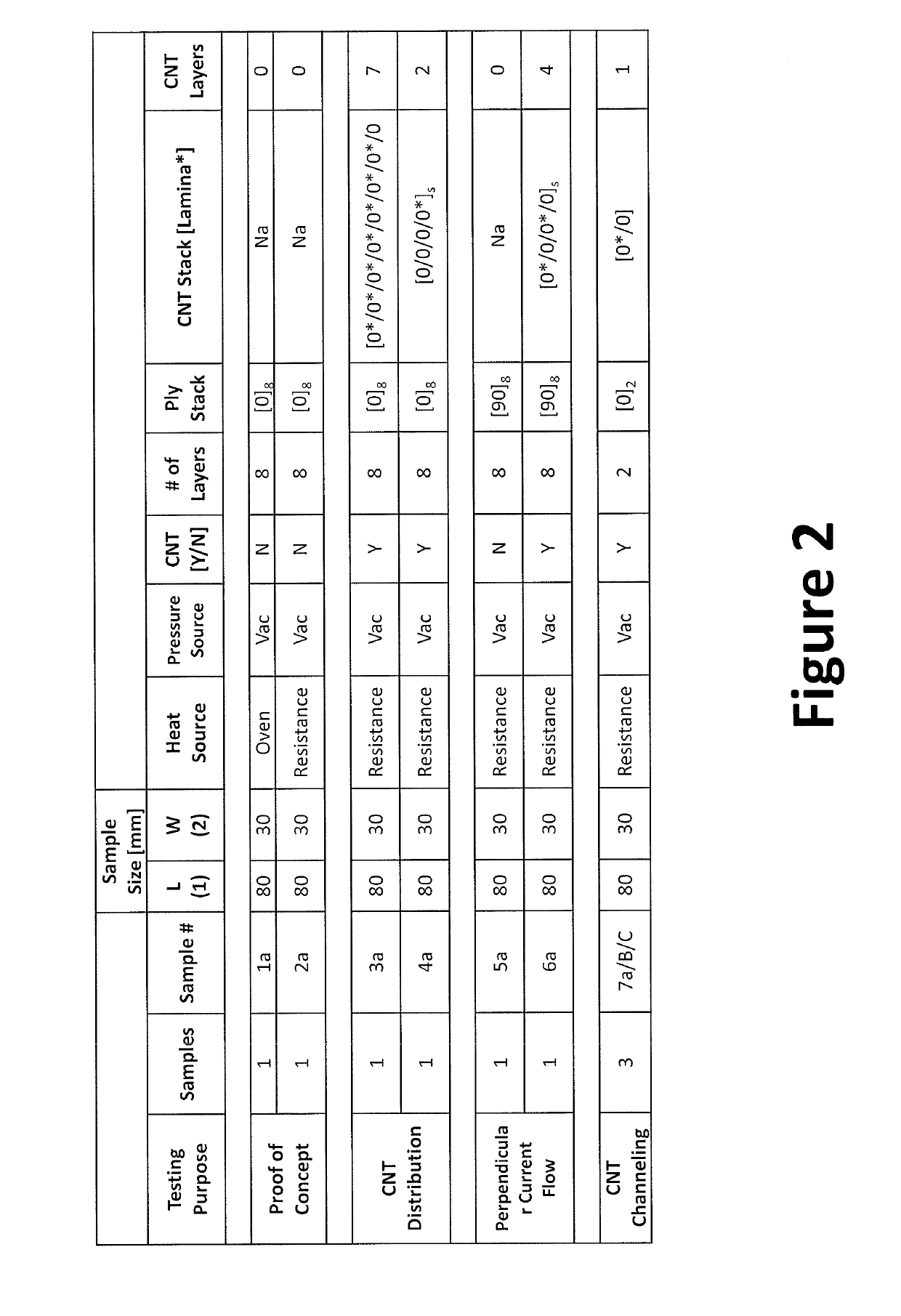Electrical curing of composite structures
a composite structure and electric curing technology, applied in the field of electric curing composite structures, can solve the problems of high cost, high cost of curing composite structures, and high cost of composite materials, and achieve the effects of improving mechanical properties, low conductivity of epoxy, and increasing resistan
- Summary
- Abstract
- Description
- Claims
- Application Information
AI Technical Summary
Benefits of technology
Problems solved by technology
Method used
Image
Examples
Embodiment Construction
[0031]Preferred embodiments of the present invention will be described hereinbelow with reference to the accompanying drawings. In the following description, certain well-known functions or constructions are not described in detail since they would obscure the invention in unnecessary detail. For this application the following terms and definitions shall apply:
[0032]The term “composite material” as used herein, refers to a material comprising an additive material and a matrix material. For example, a composite material may comprise a fibrous additive material (e.g., fiberglass, glass fiber (“GF”), carbon fiber (“CF”), aramid / para-aramid synthetic fibers, Fibre Metal Laminate (“FML”), etc.) and a matrix material (e.g., epoxies, polyimides, aluminum, titanium, and alumina, including, without limitation, plastic resin, polyester resin, polycarbonate resin, casting resin, polymer resin, thermoplastic, acrylic resin, chemical resin, and dry resin). Further, composite materials may compri...
PUM
| Property | Measurement | Unit |
|---|---|---|
| temperatures | aaaaa | aaaaa |
| power | aaaaa | aaaaa |
| resistance | aaaaa | aaaaa |
Abstract
Description
Claims
Application Information
 Login to View More
Login to View More - R&D
- Intellectual Property
- Life Sciences
- Materials
- Tech Scout
- Unparalleled Data Quality
- Higher Quality Content
- 60% Fewer Hallucinations
Browse by: Latest US Patents, China's latest patents, Technical Efficacy Thesaurus, Application Domain, Technology Topic, Popular Technical Reports.
© 2025 PatSnap. All rights reserved.Legal|Privacy policy|Modern Slavery Act Transparency Statement|Sitemap|About US| Contact US: help@patsnap.com



